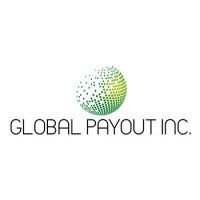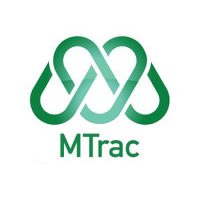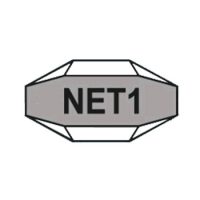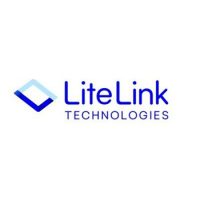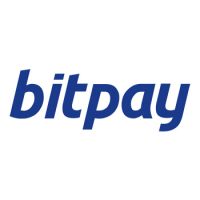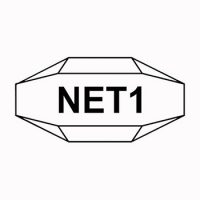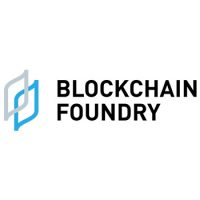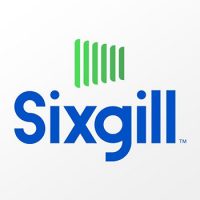Blockchain Press Releases
Optical Satellite Communication Market worth $1,134 million by 2028 – Exclusive Report by MarketsandMarkets™
CHICAGO, Aug. 16, 2023 /PRNewswire/ — The Optical Satellite Communication Market is valued at USD 282 million in 2023 and is projected to reach USD 1,134 million by 2028, at a CAGR of 32.1% from 2023 to 2028 according to a new report by MarketsandMarkets™. The optical satellite communication market is a subset of the space and satellite industry that focuses on the development, deployment, and commercialization of optical communication systems, specifically those that use laser beams for data transmission between satellites and ground stations and potentially between celestial bodies. Optical satellite communication, also known as laser communication or free-space optical communication (FSO), involves sending data over space using laser beams.
Download PDF Brochure: https://www.marketsandmarkets.com/pdfdownloadNew.asp?id=181507372
Browse in-depth TOC on “Optical Satellite Communication Market”
180 – Tables
70 – Figures
250 – Pages
Optical Satellite Communication Market Report Scope:
|
Report Coverage |
Details |
|
Market Revenue in 2023 |
$282 million |
|
Estimated Value by 2028 |
$1,134 million |
|
Growth Rate |
Poised to grow at a CAGR of 32.1% |
|
Market Size Available for |
2019–2028 |
|
Forecast Period |
2023–2028 |
|
Forecast Units |
Value (USD Million/Billion) |
|
Report Coverage |
Revenue Forecast, Competitive Landscape, Growth Factors, and Trends |
|
Segments Covered |
By Type, Component, Application, Laser Type and Region |
|
Geographies Covered |
North America, Europe, Asia Pacific, and Rest of World |
|
Key Market Challenge |
Atmosphere Interference |
|
Key Market Opportunities |
Towering adoption of cloud-based services by different industries |
|
Key Market Drivers |
Space Exploration and Scientific Research |
This technique has various advantages over standard radio frequency (RF) communication, including larger data speeds, lower latency, increased security, and reduced interference susceptibility.
The optical satellite communication market encompasses a range of components, services, and applications that leverage these benefits. Components and technologies in the Optical Satellite Communication market are laser transmitters and receivers, adaptive optics systems, modulators and demodulators, satellite terminals, and transponders. The types of optical satellite communication market Satellite Communication are Space-to-Ground Communication, Deep Space Communication, and Earth Observation. Applications are telecommunication & cellular backhaul, business & enterprise, earth observation & remote sensing, scientific research & exploration, transportation & logistics, government & defense & others. Quantum Key Distribution (QKD) technology and laser-based communication are two new trends in optical satellite communication.
Advances in laser technology, regulatory frameworks, demand for high-speed data transmission, satellite deployment trends, and the expanding interest in space exploration all have an impact on the optical satellite communication business.
Based on the type, the Satellite-to-satellite communication segment is estimated to lead the Optical satellite communication market from 2023 to 2028.
Based on the platform, the Satellite-to-satellite segment is estimated to lead the Optical satellite communication market from 2023 to 2028. It guarantees that satellites keep their orbits and times in line. Global coverage, dispersed sensing, and collaborative observations all require this cooperation. It enables satellites to instantly transmit data to other satellites or ground stations, allowing for near-real-time data dissemination. It lowers the dependency on ground stations for data transmission, allowing satellites to interact directly with one another.
Based on the components, Transponders dominate the market & are projected to witness the largest share in 2023.
The optical satellite communication industry is made up of numerous components that work together to develop, install, and operate optical communication systems for satellite-based applications. For ex. Transponders are devices that receive optical signals from space and transform them into electrical signals so that they can be processed further. They also do the opposite, transforming electrical signals into optical signals for transmission back into space. Other components are Transmitters, Receivers, Amplifiers, Transponders, Antennas, Converter & Others.
Based on the application, the government & defense segment dominates the market & is projected to witness the largest share in 2023.
Optical communication serves a wide range of commercial and military applications, including broadband internet services, media broadcasting, secure military communication, surveillance, and reconnaissance. Optical communication is utilized for communication between spacecraft and rovers exploring the Moon, Mars, and other celestial bodies. Optical links provide efficient data transfer for remote operations and scientific investigations. Optical communication can play a role in satellite servicing missions, providing real-time communication links for robotic systems and operators.
Based on laser type, GaAs-based lasers seem to dominate this segment and are estimated to account for the larger share of the Optical satellite communication market from 2023 to 2028.
The optical satellite communication market includes a wide range of laser technologies used for transferring data over space utilizing laser beams. Different laser types have distinct properties that make them appropriate for specific applications and circumstances in the satellite communication sector. Because of their efficiency, dependability, and compatibility with space settings, GaAs-based lasers have been widely utilized in optical satellite communication. Their great power output, temperature stability, and wavelength adaptability set them apart. GaAs lasers are widely used in inter-satellite communications, space-to-ground communication, and deep space missions. Other types are CO2 laser, Solid state-based laser, INP-based laser, Yag laser & others.
Inquiry Before Buying: https://www.marketsandmarkets.com/Enquiry_Before_BuyingNew.asp?id=181507372
The North American market is projected to contribute the most significant share from 2023 to 2028 in the Optical satellite communication market.
North America is home to some of the biggest players in the optical satellite communication market, including SpaceX, Boeing, and Lockheed Martin. These companies have a wealth of experience and expertise in space technology, and they are investing heavily in the development of optical satellite communication systems. The US government is a major supporter of the optical satellite communication industry. The government has invested millions of dollars in research and development of this technology, and it is also providing funding for the deployment of optical satellite communication systems. The US government is a major supporter of the optical satellite communication industry. The government has invested millions of dollars in research and development of this technology, and it is also providing funding for the deployment of optical satellite communication systems. North America is also a leader in the development of new technologies, such as quantum key distribution (QKD). QKD is a type of cryptography that uses quantum mechanics to create unbreakable encryption keys. This technology is being developed for use in optical satellite communication systems, and it has the potential to revolutionize the way we communicate in space.
The optical satellite communication companies is dominated by a few globally established players such as Ball Corporation (US), Mynaric AG (Switzerland), Bridge Comm Systems (US), SpaceMicro (US), and Tesat Spacecom GMBH (Germany).
Get 10% Free Customization on this Report:
https://www.marketsandmarkets.com/requestCustomizationNew.asp?id=181507372
Browse Adjacent Market: Aerospace and Defence Market Research Reports &Consulting
Related Reports:
Airborne SATCOM Market by Installation Type (New Installation, Upgrade), Application (Government & Defense, Commercial), Platform (Fixed Wing, Rotary Wing, UAVs), Frequency, Component and Region – Global Forecast to 2027
Tactical Data Link Market Size, Share & Industry Growth Analysis Report by Application (Command & Control, ISR, EW, Radio Communication), Platform (Ground, Airborne, Naval, Unmanned Systems, Weapons), Component, Frequency, Data Link Type, Point of Sale, Military Standard, Region – Forecast to 2027
Military Antenna Market by Component (Reflectors, Feed Horn, Feed Networks, Low Noise Block Converter (LNB)), Frequency Band (HF, VHF, UHF SHF, AND EHF), End Use (OEM and Aftermarket), Type, Application, Platform and Region (2021-2026)
Aircraft Communication System Market Size, Share & Industry Growth Analysis Report by Connectivity (SATCOM, VHF/UHF/L-Band, HF and Data Link), Fit (Line Fit, Retrofit), Platform (Fixed-wing, Rotary-wing, UAVs and eVTOL/eSTOL), Component and Region – Global Forecast to 2027
Satellite Communication (SATCOM) Equipment Market by Solution (Products and Services), Platform (Portable, Land Mobile, Land Fixed, Maritime), Technology (SOTM/COTM, SOTP), Vertical, Connectivity, Frequency and Region – Forecast to 2028
About MarketsandMarkets™
MarketsandMarkets™ is a blue ocean alternative in growth consulting and program management, leveraging a man-machine offering to drive supernormal growth for progressive organizations in the B2B space. We have the widest lens on emerging technologies, making us proficient in co-creating supernormal growth for clients.
The B2B economy is witnessing the emergence of $25 trillion of new revenue streams that are substituting existing revenue streams in this decade alone. We work with clients on growth programs, helping them monetize this $25 trillion opportunity through our service lines – TAM Expansion, Go-to-Market (GTM) Strategy to Execution, Market Share Gain, Account Enablement, and Thought Leadership Marketing.
Built on the ‘GIVE Growth’ principle, we work with several Forbes Global 2000 B2B companies – helping them stay relevant in a disruptive ecosystem. Our insights and strategies are molded by our industry experts, cutting-edge AI-powered Market Intelligence Cloud, and years of research. The KnowledgeStore™ (our Market Intelligence Cloud) integrates our research, facilitates an analysis of interconnections through a set of applications, helping clients look at the entire ecosystem and understand the revenue shifts happening in their industry.
To find out more, visit www.MarketsandMarkets™.com or follow us on Twitter, LinkedIn and Facebook.
Contact:
Mr. Aashish Mehra
MarketsandMarkets™ INC.
630 Dundee Road
Suite 430
Northbrook, IL 60062
USA: +1-888-600-6441
Email: [email protected]
Visit Our Web Site: https://www.marketsandmarkets.com/
Research Insight: https://www.marketsandmarkets.com/ResearchInsight/optical-satellite-communication-market.asp
Content Source: https://www.marketsandmarkets.com/PressReleases/optical-satellite-communication.asp
Logo: https://mma.prnewswire.com/media/660509/MarketsandMarkets_Logo.jpg
![]() View original content:https://www.prnewswire.co.uk/news-releases/optical-satellite-communication-market-worth-1-134-million-by-2028—exclusive-report-by-marketsandmarkets-301902292.html
View original content:https://www.prnewswire.co.uk/news-releases/optical-satellite-communication-market-worth-1-134-million-by-2028—exclusive-report-by-marketsandmarkets-301902292.html

Blockchain
Ethereum ETFs Aren’t Blockchain But Is A Revolutionary Tech: Top 6 Amazing Reasons To Invest In Them
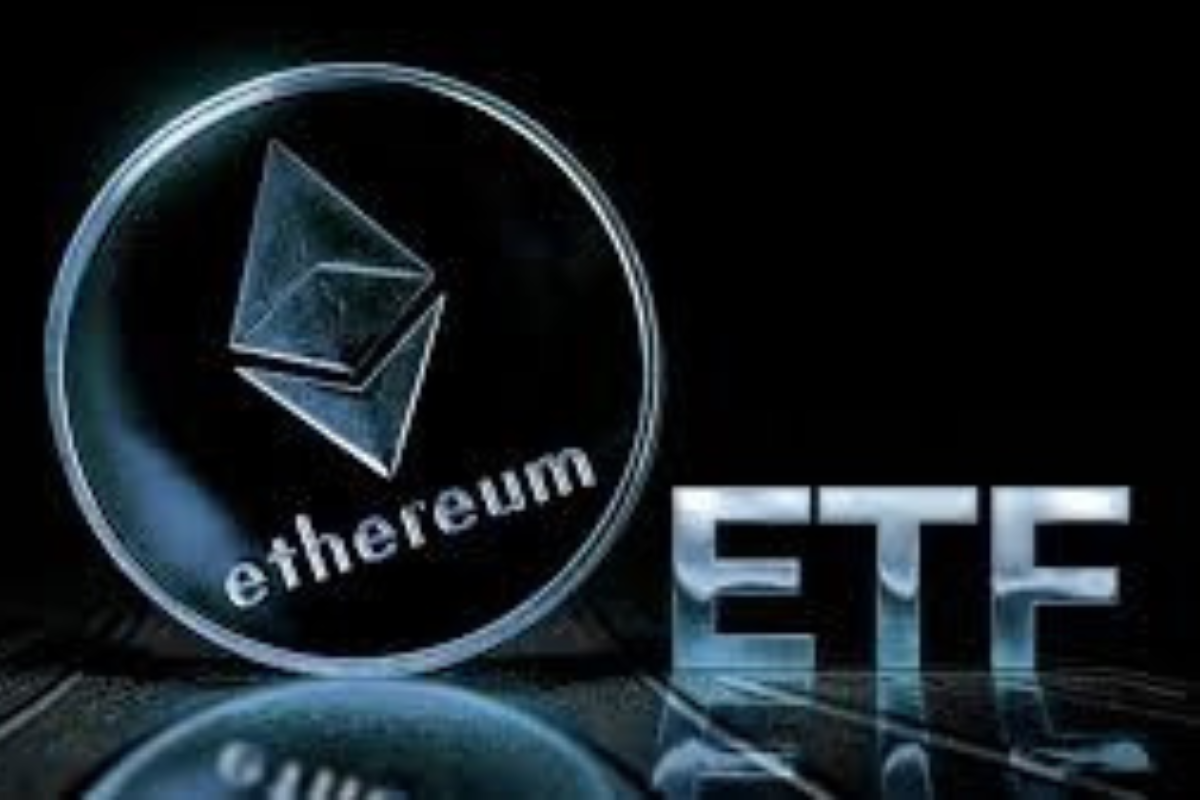
The financial landscape is rapidly evolving, with the integration of blockchain technology and cryptocurrencies becoming more prominent. Among these, Ethereum ETFs (Exchange-Traded Funds) have emerged as a significant investment vehicle, offering exposure to the Ethereum blockchain’s native cryptocurrency, Ether (ETH), without requiring direct ownership. However, it’s crucial to understand that Ethereum ETFs are distinct from the blockchain itself and serve different purposes in the investment world.
Understanding Ethereum and ETFs
Ethereum: A decentralized platform that enables the creation and execution of smart contracts and decentralized applications (dApps). It operates using its cryptocurrency, Ether (ETH), which fuels the network.
ETF (Exchange-Traded Fund): A type of investment fund that holds a collection of assets and is traded on stock exchanges. ETFs can include various asset classes, such as stocks, commodities, or bonds.
Ethereum ETFs: The Intersection of Traditional Finance and Cryptocurrency
An Ethereum ETF provides a way for investors to gain exposure to the price movements of Ether without directly purchasing the cryptocurrency. This is achieved through an ETF structure, where the fund holds assets linked to the value of Ether, and investors can buy shares of the ETF on traditional stock exchanges.
Key Features of Ethereum ETFs:
- Indirect Exposure: Investors gain exposure to Ether’s price changes without needing to manage or store the cryptocurrency themselves.
- Regulatory Compliance: Unlike the relatively unregulated cryptocurrency market, ETFs operate under the oversight of financial regulators, offering a layer of investor protection.
- Accessibility: Ethereum ETFs are available through traditional brokerage platforms, making them accessible to a broader range of investors.
Why Invest in an Ethereum ETF?
- Diversification: Including an Ethereum ETF in a portfolio can provide exposure to the cryptocurrency market, potentially enhancing diversification beyond traditional assets.
- Convenience and Familiarity: ETFs are a familiar investment product, simplifying the process of investing in cryptocurrencies.
- Professional Management: ETF managers handle the investment decisions, including the buying and selling of assets, which can be advantageous for those less familiar with the cryptocurrency space.
- Regulatory Oversight: ETFs are subject to regulatory scrutiny, potentially offering more safety and transparency compared to direct cryptocurrency investments.
- Potential for Growth: As the cryptocurrency market grows, ETFs linked to assets like Ether may benefit from rising prices.
Key Differences Between Ethereum and Ethereum ETFs
While both are related to the Ethereum blockchain, Ethereum itself and Ethereum ETFs represent different forms of investment:
- Ethereum (ETH):
- Direct ownership of the cryptocurrency.
- Full exposure to Ethereum’s features, including staking and network participation.
- Traded on cryptocurrency exchanges.
- Highly volatile and largely unregulated.
- Ethereum ETF:
- Indirect exposure through shares representing Ether’s value.
- Traded on traditional stock exchanges under regulatory oversight.
- Offers a more stable and familiar investment structure.
- Typically lower volatility compared to direct cryptocurrency ownership.
Future Considerations for Ethereum ETFs
The approval and launch of Ethereum ETFs mark a significant milestone in bringing cryptocurrencies closer to mainstream finance. They offer a convenient and regulated means for investors to gain exposure to the growing digital assets market. However, they also come with limitations, such as not allowing direct participation in the Ethereum ecosystem’s innovations, like dApps and smart contracts.
As the market evolves, we may see more sophisticated financial products that better capture the full potential of the Ethereum ecosystem. For now, Ethereum ETFs provide a balanced option for those interested in cryptocurrency exposure within the framework of traditional finance.
In conclusion, while Ethereum ETFs offer a gateway into the world of digital assets, they should be viewed as complementary to, rather than a replacement for, direct investment in the underlying blockchain technologies. Investors should carefully consider their investment goals, risk tolerance, and the unique attributes of both Ethereum and Ethereum ETFs when making investment decisions.
Source: blockchainmagazine.net
The post Ethereum ETFs Aren’t Blockchain But Is A Revolutionary Tech: Top 6 Amazing Reasons To Invest In Them appeared first on HIPTHER Alerts.
Blockchain
Nexo Reaffirms Commitment to Data Protection with SOC 3 and SOC 2 Compliance
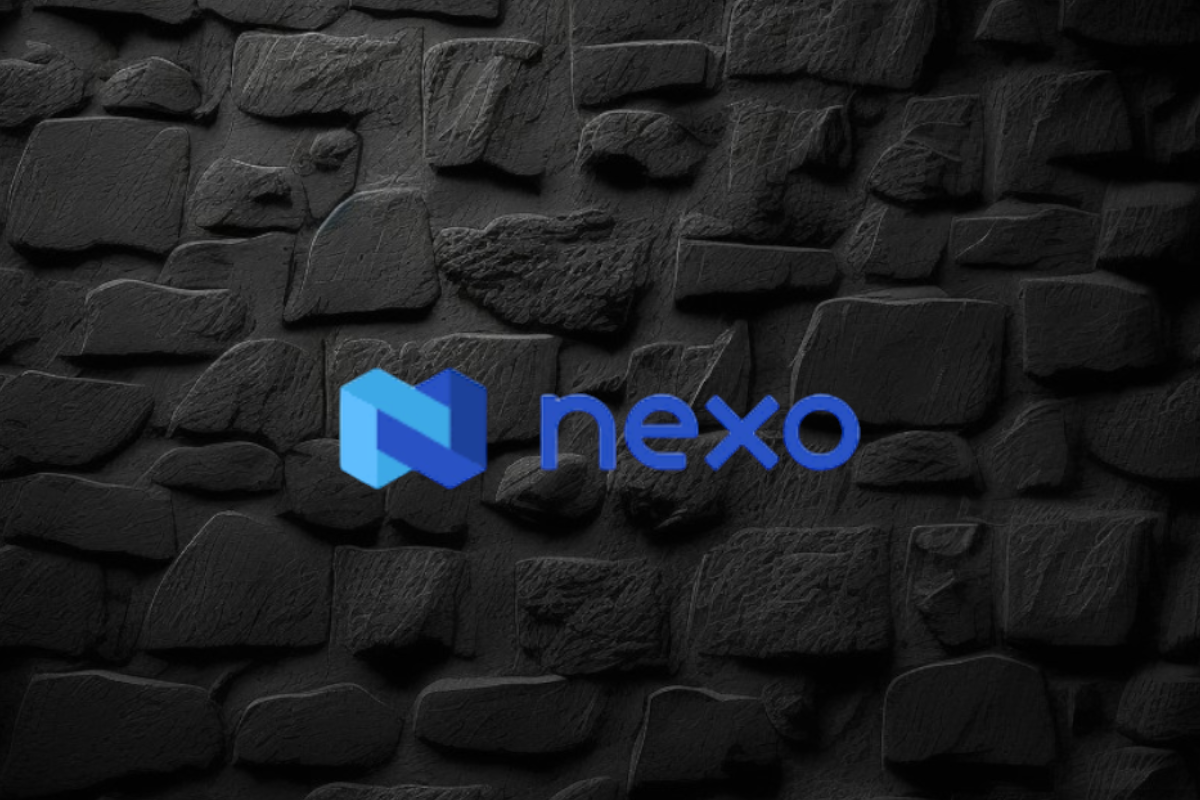
Nexo, a leading institution in the digital assets industry, has reinforced its commitment to data security by renewing its SOC 2 Type 2 audit and attaining a new SOC 3 Type 2 assessment without any exceptions. This rigorous audit process, conducted by A-LIGN, a respected independent auditor specializing in security compliance, confirms Nexo’s adherence to stringent Trust Service Criteria for Security and Confidentiality.
Key Achievements and Certifications
- SOC 2 and SOC 3 Compliance:
- SOC 2 Type 2: This audit evaluates and reports on the effectiveness of an organization’s controls over data security, particularly focusing on the confidentiality, integrity, and availability of systems and data.
- SOC 3 Type 2: This public-facing report provides a summary of SOC 2 findings, offering assurance to customers and stakeholders about the robustness of Nexo’s data security practices.
- Additional Trust Service Criteria:
- Nexo expanded the scope of these audits to include Confidentiality, showcasing a deep commitment to protecting user data.
- Security Certifications:
- The company also adheres to the CCSS Level 3 Cryptocurrency Security Standard, and holds ISO 27001, ISO 27017, and ISO 27018 certifications, awarded by RINA. These certifications are benchmarks for security management and data privacy.
- CSA STAR Level 1 Certification:
- This certification demonstrates Nexo’s adherence to best practices in cloud security, further solidifying its position as a trusted partner in the digital assets sector.
Impact on Customers and Industry Standards
Nexo’s rigorous approach to data protection and compliance sets a high standard in the digital assets industry. By achieving these certifications, Nexo provides its over 7 million users across more than 200 jurisdictions with confidence in the security of their data. These achievements not only emphasize the company’s dedication to maintaining top-tier security standards but also highlight its proactive stance in fostering trust and transparency in digital asset management.
Nexo’s Broader Mission
As a premier institution for digital assets, Nexo offers a comprehensive suite of services, including advanced trading solutions, liquidity aggregation, and tax-efficient credit lines backed by digital assets. Since its inception, the company has processed over $130 billion, showcasing its significant impact and reliability in the global market.
In summary, Nexo’s successful completion of SOC 2 and SOC 3 audits, along with its comprehensive suite of certifications, underscores its commitment to the highest standards of data security and operational integrity. This dedication positions Nexo as a leader in the digital assets space, offering unparalleled security and peace of mind to its users.
Source: blockchainreporter.net
The post Nexo Reaffirms Commitment to Data Protection with SOC 3 and SOC 2 Compliance appeared first on HIPTHER Alerts.
Blockchain
Marshall Becomes First US Senator to Walk from Controversial Crypto Bill He Co-Sponsored

Republican Senator Roger Marshall has withdrawn his support for the Digital Asset Anti-Money Laundering Act of 2023, a controversial bill he initially co-sponsored with Senator Elizabeth Warren and others. This bill, reintroduced in the Senate on July 27, 2023, aimed to bring the cryptocurrency industry into alignment with existing anti-money laundering (AML) and counter-terrorism financing (CTF) laws.
Key Provisions of the Bill
The legislation proposed stringent regulations on digital asset providers, including unhosted wallet providers, miners, and validators, by classifying them as financial institutions under the Bank Secrecy Act (BSA). It mandated these entities to adhere to BSA compliance requirements, which include extensive reporting and monitoring responsibilities. Additionally, the bill called for the Financial Crimes Enforcement Network (FinCEN) to establish regulations for reporting significant foreign digital asset holdings and to create compliance measures to address risks associated with anonymity-enhancing technologies.
Senator Marshall’s Shift
Marshall’s withdrawal from the bill comes as a surprise, particularly given his earlier criticisms of cryptocurrencies, which he has described as a “threat to national security.” This includes concerns over stablecoins like Tether potentially facilitating illegal activities and circumventing U.S. sanctions. Despite his earlier stance, Marshall’s departure from the legislation suggests a reconsideration of the bill’s implications or an alignment with broader political and industry perspectives on cryptocurrency regulation. His office has not provided a comment on the reasons for his withdrawal.
Political and Industry Reactions
The bill had garnered significant bipartisan support, with 18 co-sponsors, reflecting a broader concern in Congress over regulating the rapidly growing cryptocurrency market. However, it has also faced criticism for potentially imposing impractical compliance burdens that could stifle innovation and push crypto activities offshore. Critics argue that the bill’s stringent requirements could inadvertently drive users toward unregulated platforms, thereby undermining its intent to enhance security and regulatory oversight.
Broader Context
The withdrawal comes at a time when cryptocurrency regulation is a highly contentious issue in U.S. politics. Former President Donald Trump has promised to relax crypto regulations if elected, contrasting with the current administration’s more stringent stance. Under President Joe Biden, the Securities and Exchange Commission (SEC) and other regulatory bodies, led by figures like Gary Gensler, have taken a more rigorous approach to regulating the sector, which has drawn criticism for being overly restrictive.
Senator Marshall’s decision to step back from the Digital Asset Anti-Money Laundering Act reflects the complex and evolving nature of cryptocurrency regulation in the U.S. While the bill seeks to bring greater oversight and security to the crypto industry, it also raises concerns about regulatory overreach and its potential negative impact on innovation and privacy. As the debate continues, the U.S. legislative and regulatory landscape for cryptocurrencies remains in flux, balancing the need for security with the desire to foster technological innovation.
Source: decrypt.co
The post Marshall Becomes First US Senator to Walk from Controversial Crypto Bill He Co-Sponsored appeared first on HIPTHER Alerts.
-

 Blockchain4 days ago
Blockchain4 days agoBinance Cleared to Invest Customer Assets in US Treasury Bills: What It Means for Crypto and Dollar Dominance
-

 Blockchain4 days ago
Blockchain4 days agoDeep Custodian Limited Obtains Hong Kong TCSP License, Authorized to Provide Compliant Crypto Asset Custody Services
-

 Blockchain Press Releases2 days ago
Blockchain Press Releases2 days agoBybit Web3 Livestream Explores Cultural Meme Coins and Other Trends
-

 Blockchain2 days ago
Blockchain2 days agoBlockchain Intelligence Group adds additional modules and launches its Certified Cryptocurrency Investigator – Advanced Series
-

 Blockchain Press Releases2 days ago
Blockchain Press Releases2 days agoBybit Surges to Second Place in Derivatives Market, Solidifying Position as Global Crypto Trading Leader
-

 Blockchain3 days ago
Blockchain3 days agoBitAngels Network Hosts Blockchain Pitch Competition in Nashville
-

 Blockchain4 days ago
Blockchain4 days agoCoinW Continues Expedition Trek And Double Down On Presence At ETH-Native Events
-

 Blockchain5 days ago
Blockchain5 days agoWOO X and OpenTrade Enhance RWA Earn Vaults with Flexible Withdrawals






